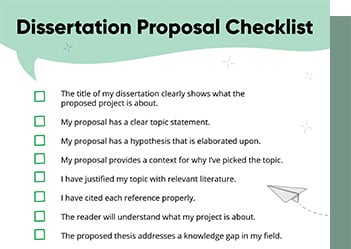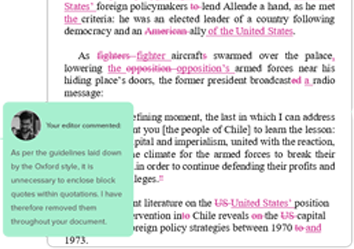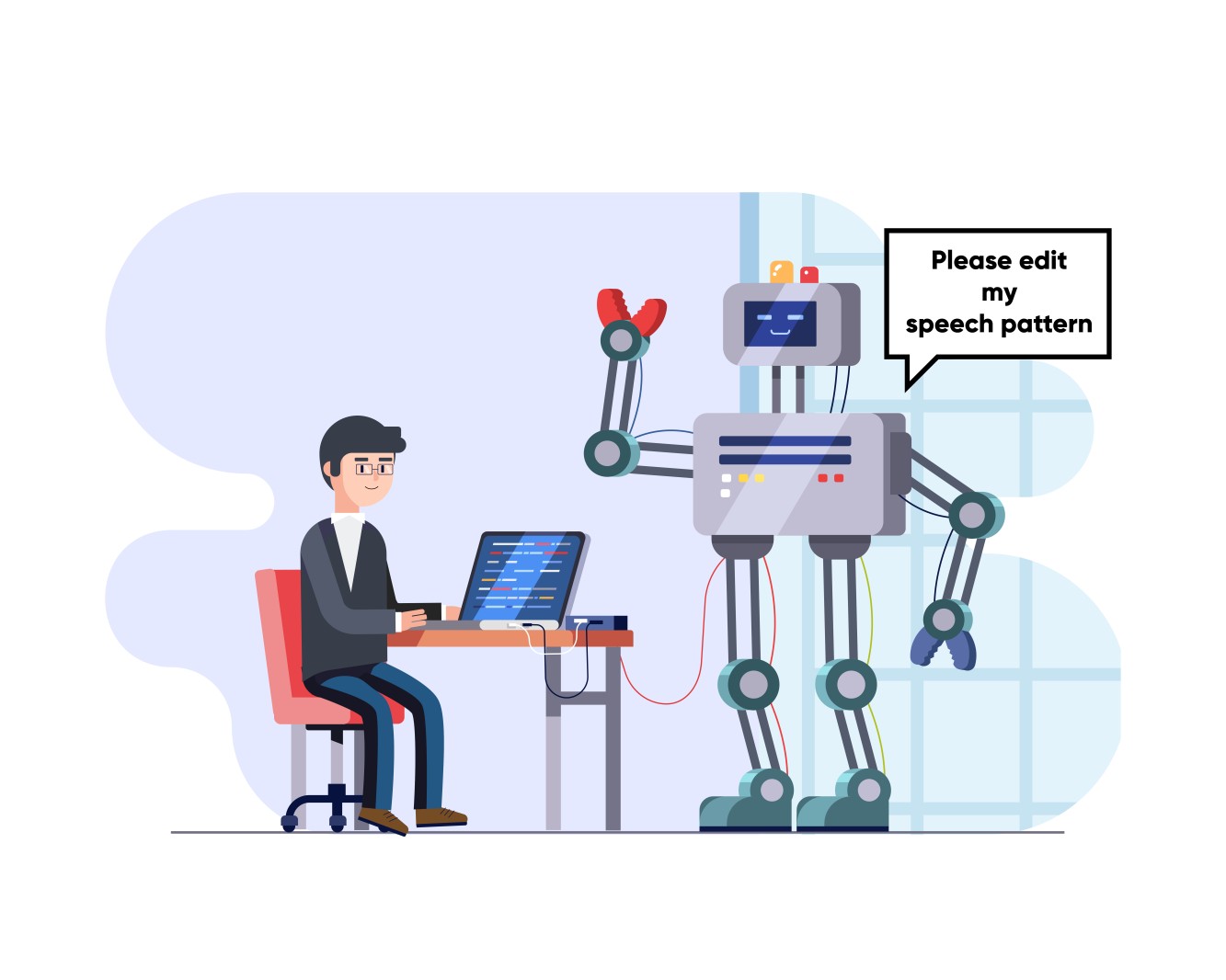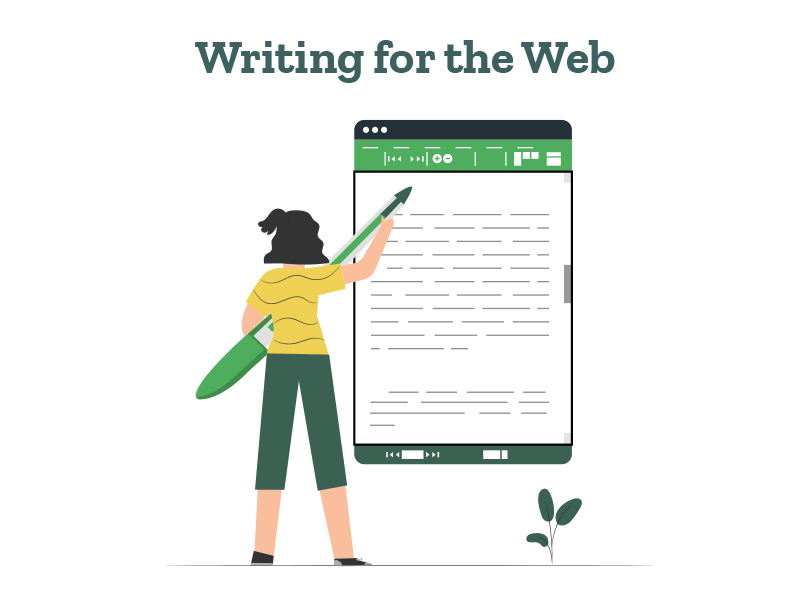Still have questions? Leave a comment

Checklist: Dissertation Proposal
Enter your email id to get the downloadable right in your inbox!
[contact-form-7 id="12425" title="Checklist: Dissertation Proposal"]
Examples: Edited Papers
Enter your email id to get the downloadable right in your inbox!
[contact-form-7 id="12426" title="Examples: Edited Papers"]Need
Editing and
Proofreading Services?

Then vs. Than: How to Use Each in a Sentence
 Jun 08, 2025
Jun 08, 2025 5
min read
5
min read
Then vs. than, a word duo that is most often mixed up. These pesky four-letter words are so similar when it comes to spelling and pronunciation that even native speakers are prone to messing up. Although ‘then’ and ‘than’ are pronounced differently, their similar sound often leads to confusion.
This is understandable since they’re also amongst the 100 most commonly used words in the English language. So, using them incorrectly is one of the most common grammar mistakes! It is important to be aware of these common mistakes to improve clarity in writing and speech. If you’ve also been making this mistake, it’s better late than (then?) never to understand how they work. Let’s begin!
Are you facing vocabulary errors? Let our editors help you write better. Get Started
What is the difference between then and than?
Although they’re often mixed up, there is a significant difference between then and than: Then is mostly used as an adverb while than is mostly used as a conjunction. Then functions as an adverb indicating time or sequence, while than is a conjunction used for comparisons.
Then indicates a period of time in the past or future.
Back then, we used to live in Colorado.
Let’s have a quick meal and then watch Drag Race.”
Synonyms: During that period, after, later
Apart from time, then can also be used to indicate consequences.
If you want to join us for the movie, then I’ll be happy to pick you up.
Synonyms: Provided, only if, unless
Although then is most often used as an adverb, it can also be used as an adjective (then-professor, then-CEO).
You may be wondering, “Is then a conjunction, or can it be used as one?” The answer is no. However, than is certainly a conjunction. In some formal contexts, than can also function as a preposition, especially when followed by pronouns in the objective case.
Than is predominantly used as a conjunction to compare two different ideas. It indicates an unequal comparison between two or more objects, people, or ideas. Here’s a sentence with than:
I find math tougher to understand than history.
Jellyfish are even older than dinosaurs!
Synonyms: Compared to, instead of, as opposed to
However, the tricky part comes in when than (in some cases) is used in phrases that indicate time. This is pretty similar to how then is used.
No sooner had the train departed than extraverted Sheila began talking to her fellow passengers.
Synonyms: Immediately, instantly, promptly
These words aren’t homophones or homographs, but they’re confused due to the similarity in their spelling and pronunciation. Now that we’ve understood the difference between then and than let’s understand how to use the two. To learn how to use than vs. then, we must take a look at them one at a time.
Where do we use then?
We use then to modify adjectives, nouns, and in most circumstances, verbs. Although uncommon, it is also used in idioms or phrases (then again, and then some, then and there, etc). Many of these are common expressions in both formal and informal speech. Then is also used to indicate time, order, or consequence. It can refer to a specific time when an event will happen or has happened, connecting actions or events in sequence.
Let’s take a closer look at these uses with the help of a few then vs. than example sentences:
Then as a noun
Then can be used in place of the time to indicate specific moments in the past. It is usually used poetically and not in everyday language.
Here are a few examples of then in a sentence:
- The river of time flows from the now to the then.
- Charlie couldn’t help but dwell on the then of their breakup.
- Pamela often reminisced about the then of her childhood.
Then as an adverb
Then is most commonly used as an adverb to place things or events in order. As seen before, then can be used to refer to past or future events.
Here are some examples:
- I think studying for a bit and then grabbing some ice cream would be more rewarding.
- The chocolate cake needs to rest for a while and then be eaten.
- He went to Peru, then to Germany, and finally returned back to New York last year.
The adverbial clauses if…then and only then can also be used to indicate a stipulation or a consequence.
Here are a few examples:
- If you’re going out, then pick up a loaf of bread on the way.
- You must put in enough work, only then will you succeed
- If I decide to move abroad, then my dog, Marty, will accompany me.
Then as an adjective
Then can also be used as an adjective to refer to the previous position held by someone or an object or event belonging to a specific period in time.
Here are a few examples:
- The manuscript’s then-editor suggested significant revisions before publishing.
- In the photograph, you can see the then-small town before it grew into a bustling city.
- Among the relics was a stack of then-unknown manuscripts written by the famous author.
Other uses of then
Apart from these three main uses, then can also be used in phrases. In this case then may not always be used to indicate temporal factors.
Take a look:
- Due to her tardiness, her team manager let her go there and then.
- I would like a big slice of chocolate cake, but then again, it has too many calories.
- Margret received multiple warnings, and then some, before becoming the most diligent employee at Goldman and Sachs.
When to use than?
Although than is a conjunction in order to compare two or more unequal things, it is also very commonly used in phrases and proverbs. Than is predominantly used as a conjunction to compare two or more unequal entities. It is also used to express preference between options, such as in the phrase “I would rather do X than Y.” It indicates an unequal comparison between two or more objects, people, or ideas. In many comparisons, the second part of the sentence highlights the alternative or result being compared.
Let’s understand this better with the help of a few examples:
Than as a conjunction
Than is predominantly used as a conjunction to compare two or more unequal entities. It is usually preceded by comparative adjectives such as more, better, worse, faster, and wiser.
Here are a few examples of than in a sentence:
- I’d rather stay home and read a book than go to a party.
- The movie was more entertaining than I expected.
- I heard that party girl Sarah moved to the Himalayas to become a monk, truth is certainly stranger than fiction.
Use of than in phrases
As mentioned above, than can be used in a different context for certain phrases. In rare cases the word than doesn’t function as a conjunction that is used to compare unequal entities. Instead, it is used to indicate an event that took place immediately after something.
Here are some example phrases of than in a sentence:
- No sooner had I reached home, than my mother gave me a list of chores to complete.
- Hardly had I finished my paper, than the evaluator snatched it away.
- Scarcely had he received his salary, than he spent it all on shopping trips!
Now that we’ve understood when to use then vs. than, let’s take a look at a few example sentences.
Then vs. than example sentences
Note: It is important to pay close attention to the correct usage of then and than in example sentences, as this can significantly impact your understanding and communication.
While understanding the use of then versus than in phrases, remember that then and than are not used not always used individually. They are often combined with other words to create phrases.
Wondering what to use when? A rule of thumb is to watch out for comparative adjectives. Comparative adjectives like more, less, better, and worse are usually followed by than.
Whereas then is used after temporal adjectives such as before and after. Let’s understand the appropriate usage of than vs. then in some of these phrases.
Practicing with real-life examples and paying attention to context can make it easier to understand and use these two words correctly. Expanding your vocabulary and practicing with different sentence structures can also help reinforce the distinction between then and than.
For additional practice and helpful exercises, consider visiting a website such as the Towson University website, which offers resources and examples on the correct usage of then and than.
Other then or other than?
Since other involves an element of exclusion the correct word here is than. Whereas other then is grammatically incorrect.
Other than involves an aspect of comparison which refers to everything apart from. It can be used as a conjunction in place of except, besides, or apart from. Here are a few examples:
- Other than pineapples, Jeremy is not too fond of any fruit.
- None of the ideas seemed feasible other than the one proposed by the team leader.
- Jamil loves all sports, but he excels in none other than basketball.
More then or more than
More is once again is a term indicating comparison, hence is followed by a than. Whereas, more then is grammatically incorrect.
More than can also be replaced with synonyms such as over, exceeding or, above. Here are a few examples:
- More than 100 guests showed up at the wedding venue, which could host no more than 50.
- Pran had a tough time adjusting to his new job, but he more than made up for it with his consistent efforts.
- Andrea was much more than just a wealthy lady, she was a self-made, shrewd businesswoman.
Less then or less than
Similar to more, less also indicates comparison and should be followed by than. This renders less then as grammatically incorrect. It is synonymous with under or below. Here are a few examples of how less than can be used in a sentence:
- The skilled professional charged no less than $100 per consultation.
- To maintain a healthy lifestyle, it’s essential to consume less than the recommended daily intake of sugar.
- The temperature outside is less than freezing, so make sure to bundle up before going out.
Then that or than that
The phrases then that and than that are both grammatically correct but serve very different functions. Then that is used to indicate consequence and is sometimes preceded by conditional words such as if and only. For example:
- If Missy isn’t here yet, then that clearly means she’s working from home.
- You must maintain a healthy diet and exercise regularly; it’s only then that you’ll see significant results.
- Study hard for the test! It’s only then that you’ll top your college.
Then that can also be used in place of after that. For example:
- Timmy had been awfully quiet for ages: It was then that I realized that he might be getting bullied.
- As I turned around, I saw a hidden path, and it was then that I realized there was more to explore.
- Priya thought she had lost her phone, but it was then that she discovered she had left it in the car!
On the other hand the phrase than that is generally preceded by comparative adjectives such as more, less, better or worse. Here are a few examples:
- Ronald is a good-looking chap, but more than that, he is a trustworthy and kind individual.
- The screen on my new phone is larger, but the battery life is smaller than that of my old one.
- Instead of resorting to petty arguments, show them that you’re better than that.
Before then or than
Since before is a temporal adjective, it is followed by then. Hence, before than is grammatically incorrect. Before then can be substituted with prior to that or preceding that in a sentence.
Here are a few example sentences using before then:
- The advent of the internet is a pretty recent phenomenon. Before then, people relied on more rudimentary methods of communication such as letters.
- The meeting is scheduled for 3 PM, but it would be nice if you could come before then. We can go over the details of our agenda.
- John hadn’t tried rock climbing before then, but he decided to give it a shot during the adventure trip.
And than or and then
And is a conjunction that is used to connect two or more words, sentences, phrases, or clauses. Since it is used as a connecting conjunction and not a comparative adjective, and is always followed by then. Whereas, and than is grammatically incorrect.
Here are some example sentences:
- The chef prepared the main course, and then he garnished it with fresh herbs.
- She locked the door, and then she realized she forgot her keys inside the house.
- The students lined up, and then they proceeded to enter the classroom one by one.
Tips for Mastering Then and Than
To confidently use “then” and “than,” it’s important to recognize their different meanings and functions. “Then” acts as an adverb, often pointing to a specific point in time or indicating a consequence. For example, “We’ll have breakfast, then go for a walk.” On the other hand, “than” is a conjunction used for comparison, as in “She is taller than her brother.” A helpful way to remember the distinction is to associate “then” with time or events, and “than” with comparisons between two things. Practicing with real-life examples and paying attention to context can make it easier to understand and use these two words correctly. The more you practice, the more natural their correct usage will become.
Practice Exercises
Practicing with targeted exercises is one of the best ways to master the correct usage of “then” and “than.”
Try fill-in-the-blank sentences, such as:
“If you finish your homework, _____ you can watch TV” (answer: then)
“He is more patient *** most people” (answer: than).
Multiple-choice questions and writing prompts that require you to use these two words in context can also reinforce your understanding.
For example, “She is taller _____ her brother” (answer: than)
“We’ll eat breakfast, _____ go for a walk” (answer: then).
By regularly practicing with these types of exercises, you’ll become more confident in distinguishing between “then” and “than,” leading to clearer and more effective communication in both writing and conversation.
Here are some more resources for you:
- Your vs. You’re: Learn the Differences with Easy Examples
- Developmental Editing vs. Copyediting: Key Differences Explained
- Independent vs. Dependent Variables | Meaning & Examples
- Editing vs. Proofreading: What’s the Difference & When To Use
- Primary vs. Secondary Sources: Definition, Types & Examples






